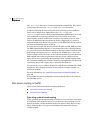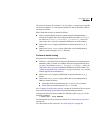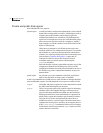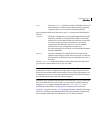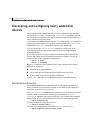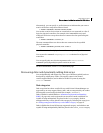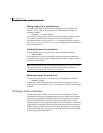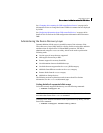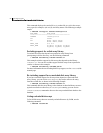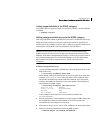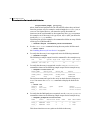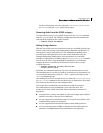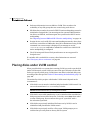
84 Administering disks
Discovering and configuring newly added disk devices
Adding support for a new disk array
The following example illustrates how to add support for a new disk array
named vrtsda to an HP-UX system using a vendor-supplied package on a
mounted CD-ROM:
# swinstall -s /cdrom vrtsda
The new disk array does not need to be already connected to the system when
the package is installed. If any of the disks in the new disk array are
subsequently connected, first run the ioscan command, and then run either
the vxdisk scandisks or the vxdctl enable command to include the devices
in the VxVM device list.
Enabling discovery of new devices
To have VxVM discover a new disk array, use the following command:
# vxdctl enable
This command scans all of the disk devices and their attributes, updates the
VxVM device list, and reconfigures DMP with the new device database. There is
no need to reboot the host.
Note: This command ensures that dynamic multipathing is set up correctly on
the array. Otherwise, VxVM treats the independent paths to the disks as
separate devices, which can result in data corruption.
Removing support for a disk array
To remove support for the vrtsda disk array, use the following command:
# swremove vrtsda
If the arrays remain physically connected to the host after support has been
removed, they are listed in the OTHER_DISKS category, and the volumes remain
available.
Third-party driver coexistence
The third-party driver (TPD) coexistence feature of VxVM allows I/O that is
controlled by third-party multipathing drivers to bypass DMP while retaining
the monitoring capabilities of DMP. Provided that a suitable ASL is available,
devices that use TPDs can be discovered without requiring you to set up a
specification file, or to run a special command. In previous releases, VxVM only
supported TPD coexistence if the code of the third-party driver was intrusively
modified. The new TPD coexistence feature maintains backward compatibility
with such methods, but it also permits coexistence without require any change
in a third-party multipathing driver.





